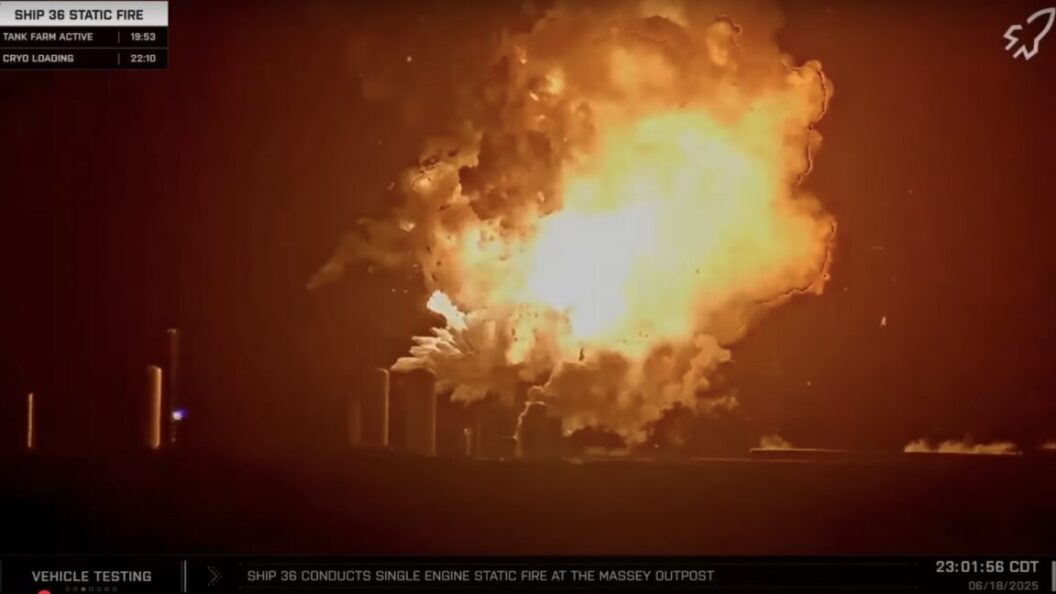SpaceX’s Starship Rocket Explodes During Ground Test
Introduction to the Incident
In a significant setback for SpaceX’s ambitious Starship program, the company’s latest test rocket, designated Ship 36, exploded during a ground test in South Texas late Wednesday. The explosion comes on the heels of three previous failures this year, casting a shadow over the future of the program aimed at revolutionizing space travel.
Details of the Explosion
The explosion occurred at SpaceX’s rocket development complex in Starbase, Texas, shortly after 11:00 PM local time. Witnesses reported seeing the rocket burst into flames, with damage visible for miles around the facility. Local residents as far as 30 miles reported feeling the impact of the blast, demonstrating the scale of the incident.
Live footage streamed by media outlets, including NASASpaceflight.com and LabPadre, captured the dramatic moment as the 15-story rocket was preparing for a static fire test, which is typically one of the final checks before launching. SpaceX confirmed that Ship 36 “experienced a major anomaly” as it was set to ignite its six Raptor engines.
Safety and Emergency Response
Following the explosion, SpaceX implemented immediate safety protocols. The area around the test site was evacuated, and the company reported that all personnel were safe and accounted for. Firefighters from the Brownsville Fire Department responded to the scene to manage the resulting fires and ensure the safety of the area.
In a public statement via social media platform X, SpaceX emphasized that there were no hazards to surrounding communities and urged residents to stay clear of the vicinity during the ongoing recovery efforts. The company conveyed its commitment to coordinate with local officials in ensuring public safety.
Possible Causes of the Explosion
SpaceX founder and CEO Elon Musk later provided insights into the potential cause of the disaster. Preliminary data suggested that a high-pressure nitrogen tank failed within Starship’s payload bay. These tanks, known as composite overwrapped pressure vessels (COPVs), serve critical functions for purging and pressurizing compartments within the rocket. Historical data indicates that failures related to COPVs have previously led to catastrophic outcomes, particularly with SpaceX’s Falcon 9 rockets in 2015 and 2016.
Implications for the Starship Program
This incident not only signifies a technical setback but also raises questions about the future trajectory of SpaceX’s Starship program. With multiple failures this year, including a previous explosion during a launch attempt, stakeholders and experts are closely watching how the company will adapt and respond. Elon Musk’s vision for Starship includes missions to the Moon and Mars, and any delays might impact not only the timeline for these ambitious goals but also investor confidence.
Conclusion: Reflection on the Incident
The explosion of Ship 36 serves as a stark reminder of the challenges inherent in pioneering space engineering. As SpaceX continues to push the boundaries of rocket technology, understanding and addressing technical failures will be crucial for the company’s long-term success. Moving forward, the insights gained from this incident will likely guide improvements in safety protocols and engineering practices, ultimately shaping the future of human space exploration. Tech enthusiasts and industry experts alike will keenly await SpaceX’s response in the wake of this incident, both for its implications on their ongoing projects and the broader landscape of aerospace innovation.









